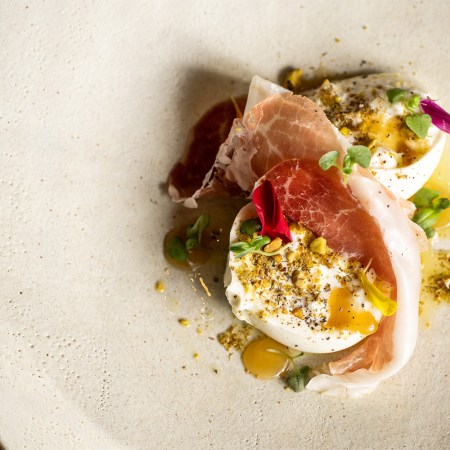We’ve all seen the studies, heard the rumors: That late-night cocoa or spendy single-origin bean-to-bar habit isn’t an indulgence – it’s a brain-boosting functional food. Chocolate’s antioxidants purportedly improve immune health, heart function and even lower blood pressure. It’s even, so we’ve been told, a powerful aphrodisiac.
But lest you go spouting nonsense to your friends (like the fact that white chocolate isn’t chocolate…but more on that in a second), it’s time to talk to someone who really knows. We tapped into five generations of chocolate expertise and sat down with Amy Guittard, chief marketing officer at San Francisco’s Guittard Chocolate, the oldest family chocolate maker in the US, to talk health benefits, prices, purity and more.
It’s perhaps no surprise that Guittard, as a member of the fifth generation of the Guittard family, has “an insane sweet tooth.”
“Not sure whether it’s growing up in the business or maybe the fact that my mom had a candy store when I was a kid,” she says. “Either way, I think the nostalgia of chocolate has a lot to do with my love affair.”
After 10 years in the industry, her love has developed into bona fide geekdom, a keen desire to know more about “not just the final product but the artistry of the craft.” At Guittard in particular, she loves the way that her family marries a firm appreciation for tradition and an openness to innovation as “a crucial component to crafting a super-premium product.”
“It’s honoring and respecting the bean while also trying to find new ways to highlight those flavors,” she says. “It’s honoring our family tradition, the passion that came before us and the creativity that continues to push us to be a better business in all that we do.”
An equal opportunist, Guittard loves chocolate in any form, from high-quality, single-origin stuff to her beloved chocolate-covered gummy bears. She’s the perfect person to shed light on all of our cocoa queries.
InsideHook: Why does milk chocolate get such a plebian reputation?
Amy Guittard: I honestly don’t know. Milk chocolate is quite difficult to make, so a good one really should be more lauded. Starting with quality raw materials is key — good quality dairy, relationship with suppliers, evaluating incoming dairy not to mention key steps during the crafting process. You can find tremendous depth and sophistication in a milk chocolate, too: sour dairy, fresh dairy, not to mention the variety of different percentages that are now emerging in the market like “dark milk chocolate” or even very light milk chocolates. This variety in percentages and color adds variety to the use case for milk chocolate in a wide range of applications but also eating experiences.
You often hear people say that white chocolate isn’t really chocolate. Is that true?
White chocolate is chocolate so long as it meets the standards of identity for “white chocolate,” which requires 20 percent or more cocoa butter. Cocoa is comprised of both cocoa butter and cocoa solids; white chocolate is white because it doesn’t have any of the cocoa solids, only cocoa butter.
What makes expensive chocolate worth it?
This certainly depends on a variety of factors, the primary one being that “expensive” is different for different people. Instead of simply looking at the price tag, do a taste test — you can find some really beautifully crafted chocolates at a variety of price points. The primary pieces to consider when trying to analyze a chocolate for quality would be grind, temper, overall flavor (making sure there are no off flavors!) and general meltability. Oftentimes, price reflects the sourcing and quality of the beans used. For example, organic beans and premium single-origin beans command a higher price point than some others.
Speaking of which, single-origin chocolates are all the rage right now — are they really that much better?
It’s not a matter of better or worse, more of a different tasting experience. Sort of the difference between a “sipping chocolate” and what we would call a “more-ish” chocolate. Single origins offer a very specific flavor profile and often go well with specific flavor pairings; they’re also so pointed that some might find them difficult to eat in one fell swoop. Blends, on the other hand, can be designed to be more versatile, working with a wide variety of flavor profiles but bringing depth and sophistication to each one in a different way. Because they are sometimes a bit more balanced, you might find you’re able to eat a lot more of it out the gate — hence the term “more-ish.” With single origins the differences in crop may be more evident, as opposed to a blend — like with wine. All in all, it’s more of a matter of preference.
Is chocolate really that good for you, or is that wishful thinking?
Isn’t the adage “Everything in moderation”? Chocolate does naturally have many healthy properties, mostly related to levels of polyphenols and antioxidants. There are certainly studies out there that also show that chocolate can lower the risk of cardiovascular issues, as well as the relationship between chocolate and well-being, specifically related to mood and reduced anxiety. I’ve also heard that chocolate can have a coating effect on your teeth, essentially working as a barrier against plaque build-up — but please be sure to ask your dentist prior to jumping on the chocolate-as-cavity-prevention bandwagon.
Of all of the “guilty” pleasures, the one that people seem to have no problem admitting is the fact that they enjoy “a square of dark chocolate” from time to time. Why do you think that is?
I say a square of dark chocolate, a handful of chocolate chips, a few wafers, or an entire pot de creme — it satisfies the sweet tooth, and there’s also some health benefits to it as well. I say embrace the things that bring you joy.
Speaking of joy: Is chocolate really an aphrodisiac?
I’ll let you be the judge of that.
This article was featured in the InsideHook SF newsletter. Sign up now for more from the Bay Area.






















